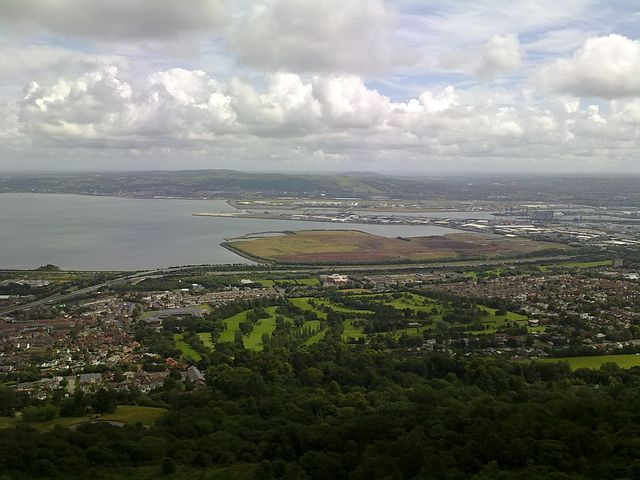
Belfast is Northern Ireland’s capital. It was also the birthplace of the RMS Titanic, which famously struck an iceberg and sank in 1912. This legacy is supported in the renovated dockyards’ Titanic Quarter, which includes the Titanic Belfast, an aluminium-clad museum reminiscent of a ship’s hull, as well as the Titanic Slipways which now host open-air concerts, and shipbuilder Harland & Wolff’s Drawing Offices.
There was a time when Belfast was in the news for all the wrong reasons. And while the worst of the uprisings are in the past, there are still large portions of the city divided by religious and political preferences. One example is the Peace Lines in the west part of the city. Here walls have been built between neighborhoods to draw a line of recognition between people of different religious and political backgrounds. Although Belfast has suffered with unrest and chaos in the past, 21st-century Belfast has become a completely different place, and those walls will soon become a thing of the past.
The historic port has been revitalized by the Titanic Quarter, where two riveting museums are based. And…sightseers can investigate Stormont – City Hall, and many more Victorian landmarks, all bordered by the basalt hills to the west.
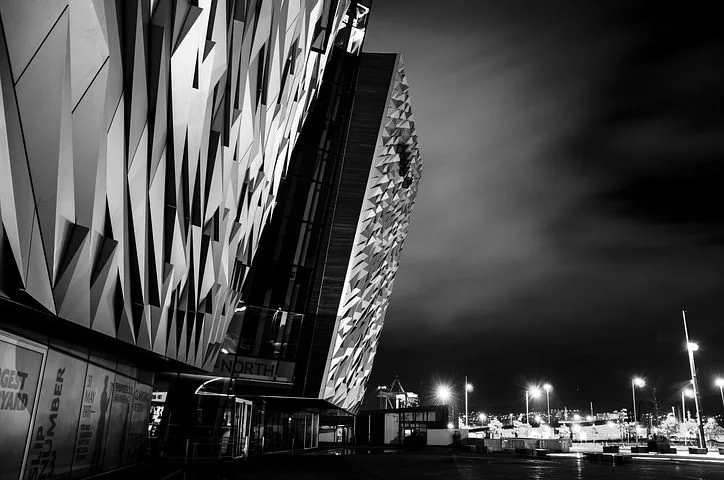
1. Ulster Museum
On the northwest end of Belfast’s Botanic Gardens, the Ulster Museum has a bit of everything, from a masterpiece by Jacob Jordaens to dinosaur skeletons and an Egyptian mummy – Takabuti, a noblewoman from Thebes during the 25th Dynasty of Egypt. From the distant past there are polished Neolithic axes and pieces of jewelry from a Spanish Armada shipwreck.
Unique articles found in the museum are a slice from a meteorite and the Nobel Peace Prize awarded to Mairead Corrigan – who witnessed three of her nieces and nephews being killed in a road accident caused by the shooting of an IRA member, and reacted by organizing rallies asking for peace and reconciliation.
If you have an eye for decorative items, you can spend quite a bit of time checking out the glassware, ceramics, textiles, costumes, jewelry and metalwork. Fine art exhibitions offer a glimpse into international and local history and culture through costume and fashion, pottery, furniture and even jewelry.
In the Ulster Museum there is something for everyone and marvels wherever you turn. There are historic exhibitions that track the rise and fall of Belfast’s craft trades, there are thousands of fossils, and even the only set of dinosaur bones ever found on the island of Ireland.
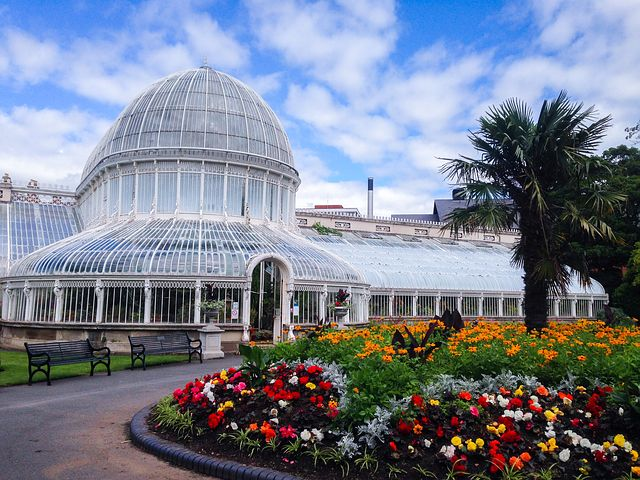
2. Botanical Gardens – Belfast
These exquisite Botanical Gardens were designed in the 19th century by Sir Charles Lanyon – who also designed parts of Queen’s University. The Gardens were established as a private park in 1828, but 70 years passed before they were fully opened to everyday people. They are only a short stroll away from the Ulster Museum.
The Garden’s Palm House is a tribute to Victorian Belfast with Its ornate cast-iron structure. An interesting aspect of the Palm House (built at the turn of the 1840s) is that it is one of the first curvilinear glasshouses built anywhere in the world. The building was put together by the Irish iron founder Richard Turner, who would go on to build the iconic glasshouses at Kew and Glasnevin.
There are many interesting types of follage and flowers that adorn the Gardens. A few unique and rare flower specimens to look out for in the Palm House are the globe spear lily, (11 meters in height), a Xanthorrhoea which is four centuries old, and the Topical Ravine, which has an indoor sunken garden with tropical fauna and birds of paradise between two raised viewing galleries.
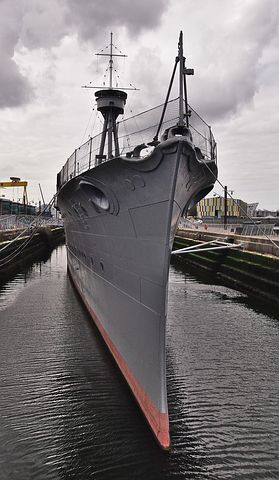 3. HMS Caroline
3. HMS Caroline
The HMS Caroline was launched in 1914 and is moored in the Titanic Quarter. It is the surviving vessel that fought during the Battle of Jutland in 1916. In the Second World War she was the navy’s headquarters in Northern Ireland, and after that served as a training ship. On board you can see the restored cabins and mess, and also interactive exhibitions about naval warfare in the First World War.
Up until 2011 she was still commissioned by the Royal Navy, having been docked in Belfast since the early 1920s. After decommissioning, HMS Caroline’s future was uncertain, but the ship was eventually restored and opened as a floating museum.
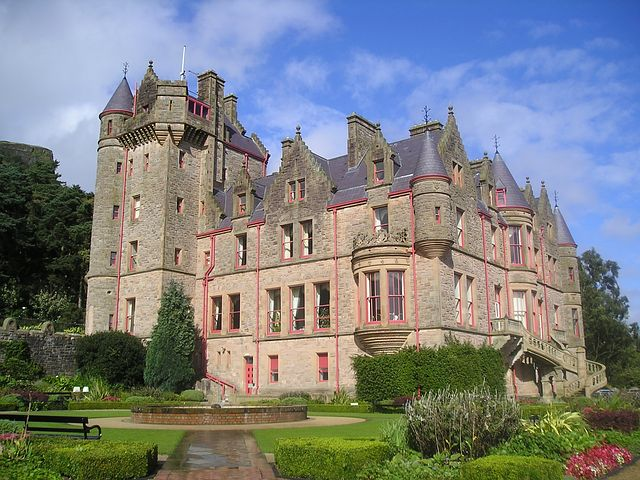
4. Belfast Castle
At the southern boundary of the Cave Hill Country Park is a Scottish Baronial-style home built in the 19th century by George Chichester, 3rd Marquess of Donegall. The Scottish Baronial style is a mix of Renaissance and Gothic, and the house is endowed with corner turrets and stepped gables.
The name of the building comes from the Norman Belfast Castle, originally at the very heart of the city. After that stronghold was burned down at the start of the 18th century, its owners, the Chichesters, moved to this location in the suburbs. From the grounds you can take in far-ranging vistas of Belfast, and inside is a visitor center, antiques shop and restaurant.
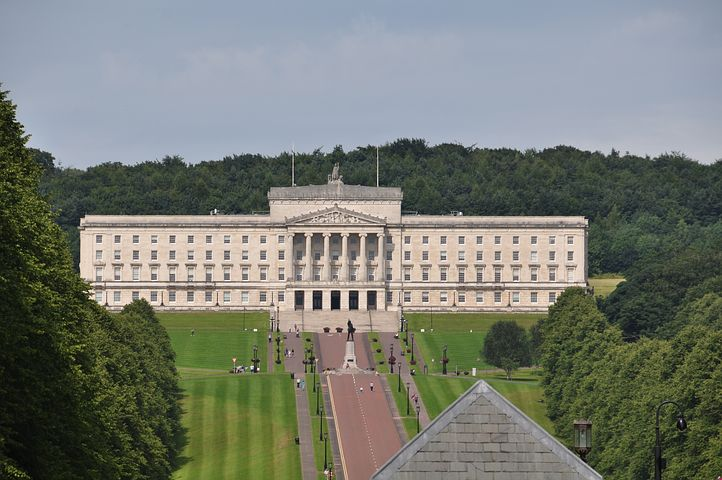
5. Stormont Parliament Buildings
The Northern Ireland Assembly sits at this Grade A-listed parliament building nicknamed the “House on the Hill” in the leafy Stormont Estate. The complex is fronted by a statue of the Irish Unionist politician Lord Carson, standing on an axis with the portico and approached by Prince of Wales Avenue.
There are six pillars in the portico, each representing one of Northern Ireland’s counties, while the building is 365 feet wide – one foot for each day of the year. You can go inside to behold Sir Arnold Thornely’s architecture, attend debates and committee hearings, and join a free guided tour. The grounds are mostly unrestricted and woven with walking paths so you can wander through the greenery leisurely and without formal restrictions.
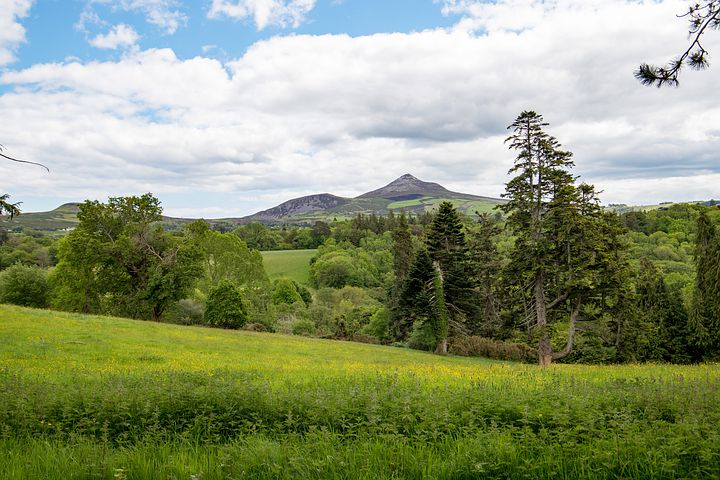
6. Black Mountain
The Divis and Black Mountain are the highest peaks in the Belfast area, filling the city’s western horizon. They stand at 478 and 388 metres respectively and are made up of limestone and basalt. It takes only minutes from the city center to reach the peaks. You can hike along four trails and contemplate views of Scotland, Donegal, Strangford Lough, the Mournes and Sperrins.
Once you cross the first ridge you may forget there’s a capital city behind you as you amble among grazing horses and cattle, into upland heath and blanket bog.
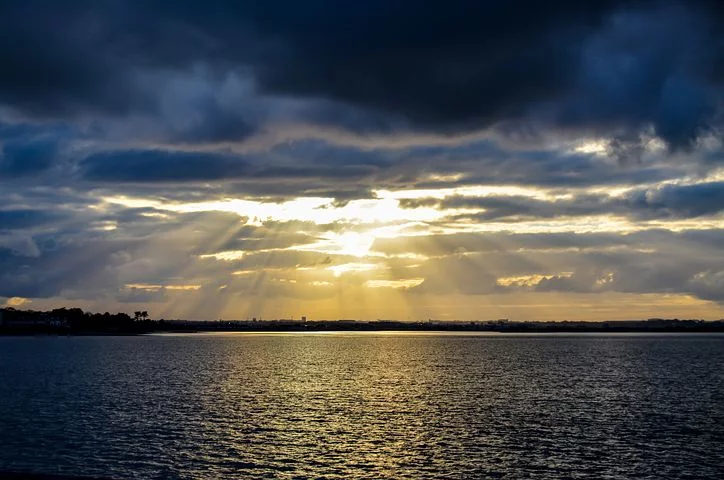
7. Coastal Highway – A2 Road
If you like to drive when you travel, you can get behind the wheel in Belfast for a drive you’ll never forget. The A2 to Derry is also known as the Antrim Coast Road and the Causeway Coastal Route.
There are a surprising amount of things to see on the drive – from the UNESCO World Heritage Giant’s Causeway to ancient castle ruins, magnificent glens, and scenic basalt cliffs.
When the weather’s good consider being tempted to park up at a fishing village and have some tea, wander a wild sandy beach, or head off on a cliff-top walk. Whatever you do, you won’t be disappointed. The beauty of the coast is breathtaking.

8. Titanic Belfast
The Titanic Belfast is built on the slipways where the ship itself was constructed over 100 years ago. It’s more than just a museum …it’s really an experience. Inside the 6-floor shimmering exterior, you’ll find nine galleries spread across six floors mirroring the height of Titanic, as well as interactive exhibitions and an underwater cinema.
Located where the ship was originally created in 1912, the exhibition follows the story of the Titanic, from her conception in Belfast, through her construction and launch, to her famous maiden voyage and subsequent place in history. Using innovative design, interpretation and technology, each of the nine galleries focus on a unique part of the Titanic story and the context of the period in which it was built.
A movie shown in the cinema tells us the entire story of Titanic which was a dream and then a tragedy. To take in the entire story and all visuals, you may want to allow at least three hours of special effects, reconstructions and moving images.
References:
25 Best Things to Do in Belfast (Northern Ireland)
Belfast: Top 9 Attractions
https://www.ireland.com/en-us/destinations/northern-ireland/county-antrim/belfast/articles/belfast-top-nine-attractions/




